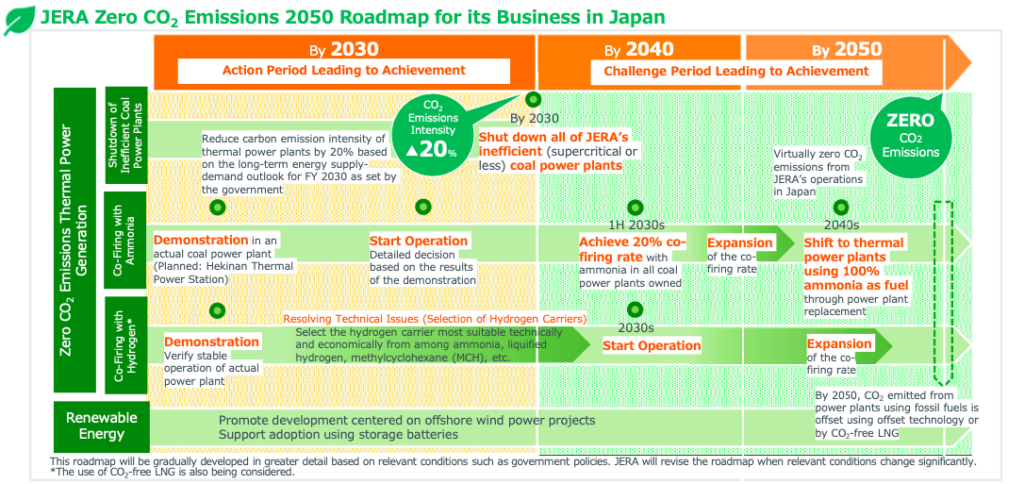Japan’s Electricity Sector: An Early Market for Low-Carbon Ammonia
By Stephen H. Crolius on October 29, 2020
This week, Japan’s new Prime Minister Yoshihide Suga announced that by 2050 the country would drive its greenhouse gas emissions to zero and achieve carbon-neutrality. The stipulation of a target date marks an important change in climate policy. Under former Prime Minister Shinzo Abe, the country’s goal was carbon-neutrality sometime in the second half of the century. Japan joins the European Union, China, and a growing list of other countries that have tied quantitative goals for deep reductions in greenhouse gas emissions to specific dates.
According to the coverage in the U.K.’s Climate Home News:
Japan is the world’s fifth biggest emitter of carbon dioxide and has 48 GW of coal power capacity, which provide almost a third of its electricity generation. Another 7.4 GW are under construction and 2.5 GW in planning, according Global Energy Monitor data … Under the current energy plan, coal, oil and gas still account for 56% of the energy mix in 2030. Renewables are only expected to provide 22-24% of power generation …
Without going into detail, Suga hinted his government would address the country’s dependence on coal. “We will fundamentally shift our long-standing policy on coal-fired power generation,” he said during his speech.
Climate Home News, “Japan net zero emissions pledge puts coal in the spotlight,” October 26. 2020
Earlier in the month, the Japanese electric utility JERA announced its intention of “achieving zero CO2 emissions by 2050.” JERA is a joint venture of Tokyo Electric Power and Chubu Electric Power. The entity was formed in 2015 to take ownership of each partner’s thermal generating assets. It is Japan’s largest power generation company.
In its press release, JERA said its first step toward this goal “was to establish a ‘JERA Zero CO2 Emissions 2050 Roadmap for its Business in Japan.’” The press release continues: “The main pillars of the roadmap are the shutdown of all inefficient coal power plants (supercritical or less) by 2030.” In parallel, the company plans to “conduct demonstration tests of mixed combustion with ammonia at high-efficiency (ultra-supercritical) coal power plants.” A specific 2030 goal is to “reduce carbon emission intensity of thermal power plants by 20%.” 20% happens to be the ammonia-coal co-firing ratio that Japanese energy equipment producer IHI Corporation has demonstrated in recent tests. (Ammonia-coal co-firing was one focus of a recent Ammonia Energy article on Japanese efforts to develop ammonia combustion technology.)
Between the Prime Minister’s top-down and JERA’s bottom-up announcements was a communique from the Ministry of Energy, Trade, and Industry (METI). According to an October 15 Nikkei article (“Hydrogen procurement to be commercialized in the 2030 years”), METI “aims to secure an annual import volume of 300,000 tons [of hydrogen] around 2030 so that it can be commercialized through demonstration projects related to production and transportation with Australia and Brunei.” This quantity would be increased in the succeeding years to 5-10 million tons annually.
Where is all this activity heading? JERA provides a clear pathway in its illustration of its Zero CO2 Emissions 2050 Roadmap for its Business in Japan (click to download).
First, JERA intends to deploy ammonia co-firing in an actual coal power plant (Hekinan Thermal Power Station) before 2030. Then, by mid-2030s, it intends to “Achieve 20% co-firing rate with ammonia in all coal power plants owned.” This co-firing rate can then be expanded until, in the 2040s, JERA can “Shift to thermal power plants using 100% ammonia as fuel through power plant replacement.”
